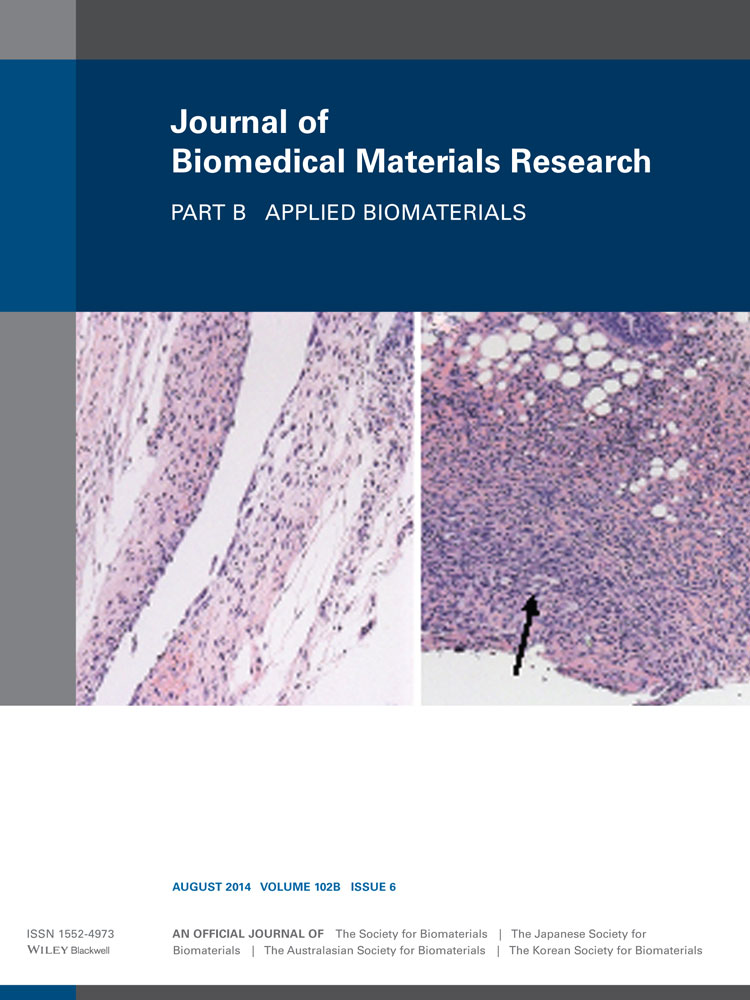The effect of stem material and surface treatment on the torsional stability at the metal–cement interface of upper limb joint replacement systems
Abstract
Stem surface treatment and material are two design factors that may affect the onset of implant loosening. For upper limb applications, no known in vitro studies have addressed the role of these two factors on cemented implant stability. Therefore, the purpose of this study was to compare the torsional stability of cemented titanium and cobalt chrome stems with varying surface treatments in vitro. Thirty implant stems of circular cross-section (Ø = 8mm) were machined from cobalt chrome (n = 15) and titanium (n = 15). For each type, stems were subdivided into three groups for application of clinically relevant surface treatments: smooth, sintered beads, or plasma spray. Stems were potted in bone cement, allowed 24 h to cure, and placed in a materials testing machine. Stems were tested under cyclic torsion (1–30 Nm), using a staircase loading protocol. Failure was defined as either the first rapid increase in stem rotation without resistance, or attaining a maximum torque of 30 Nm. Implant stems with non-smooth surfaces offered greater resistance to torsion (p < 0.05), with the plasma spray treatment outlasting the beaded and smooth stems (p < 0.05). Titanium offered superior interface strength (p < 0.05) but reduced resistance to motion (p < 0.05) when compared to cobalt chrome. Therefore, these design features should be considered during upper limb implant design. © 2013 Wiley Periodicals, Inc. J Biomed Mater Res Part B: Appl Biomater, 102B: 1217–1222, 2014.




